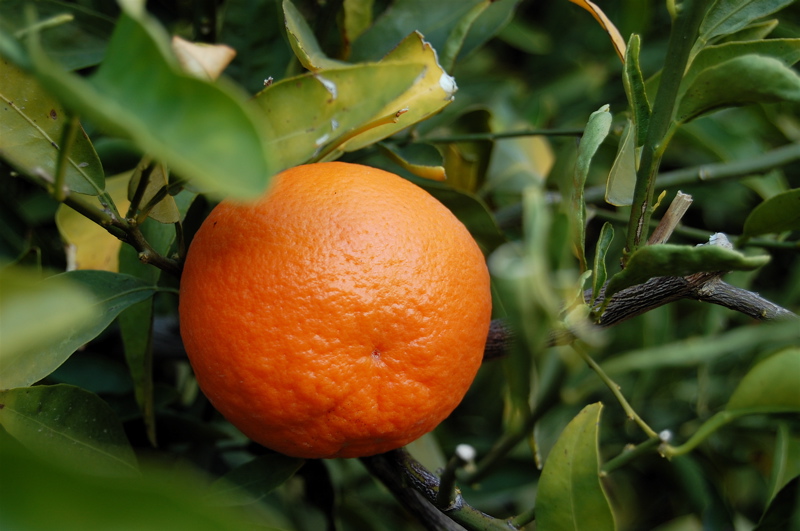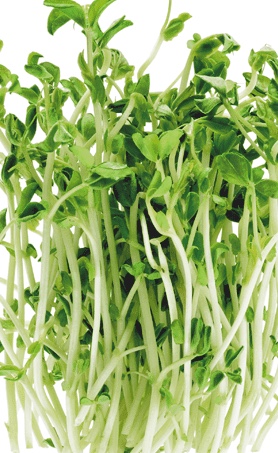Tangerine vs. Pea Shoots
Nutrition comparison of Tangerine and Pea Shoots
Ever wonder how your favorite foods stack up against each other in terms of nutrition?
We compared the nutritional contents of
tangerine
versus
pea shoots
(100g each)
below using 2020 USDA and NIH data[1].
For a quick recap of significant nutrients and differences in tangerine and pea shoots:
- Both tangerine and pea shoots are high in Vitamin C.
- Pea shoot has 67% less sugar than tangerine.
- Pea shoot has more niacin and folate, however, tangerine contains more pantothenic acid.
- Pea shoot is a great source of dietary fiber.
USDA sources for nutritional information: Tangerine (Tangerines, (mandarin oranges), raw) and Pea Shoots (ORGANIC PEA SHOOTS) . Have a correction or suggestions? Shoot us an email.
Calories and Carbs
calories
Tangerine and pea shoots contain similar amounts of calories - tangerine has 53 calories per 100 grams and pea shoot has 35 calories.
For macronutrient ratios, tangerine is lighter in protein, heavier in carbs and similar to pea shoots for fat. Tangerine has a macronutrient ratio of 5:90:5 and for pea shoots, 24:70:7 for protein, carbohydrates and fat from calories.
Macro Ratios from Calories:
| Tangerine | Pea Shoots | |
|---|---|---|
| Protein | 5% | 24% |
| Carbohydrates | 90% | 70% |
| Fat | 5% | 7% |
| Alcohol | ~ | ~ |
carbohydrates
Pea shoot has 47% less carbohydrates than tangerine - tangerine has 13.3g of total carbs per 100 grams and pea shoot has 7.1g of carbohydrates.
dietary fiber
Pea shoot is a great source of dietary fiber and it has 33% more dietary fiber than tangerine - tangerine has 1.8g of dietary fiber per 100 grams and pea shoot has 2.4g of dietary fiber.
sugar
Pea shoot has 67% less sugar than tangerine - tangerine has 10.6g of sugar per 100 grams and pea shoot has 3.5g of sugar.
Protein
protein
Tangerine and pea shoots contain similar amounts of protein - tangerine has 0.81g of protein per 100 grams and pea shoot has 2.4g of protein.
Fat
saturated fat
Both tangerine and pea shoots are low in saturated fat - tangerine has 0.04g of saturated fat per 100 grams and pea shoot does not contain significant amounts.
Vitamins
Vitamin C
Both tangerine and pea shoots are high in Vitamin C. Tangerine has a little more Vitamin C (8%) than pea shoot by weight - tangerine has 26.7mg of Vitamin C per 100 grams and pea shoot has 24.7mg of Vitamin C.
Vitamin A
Tangerine has 183% more Vitamin A than pea shoot - tangerine has 34ug of Vitamin A per 100 grams and pea shoot has 12ug of Vitamin A.
Vitamin E
Tangerine and pea shoots contain similar amounts of Vitamin E - tangerine has 0.2mg of Vitamin E per 100 grams and pea shoot does not contain significant amounts.
The B Vitamins
Pea shoot has more niacin and folate, however, tangerine contains more pantothenic acid. Both tangerine and pea shoots contain significant amounts of thiamin, riboflavin and Vitamin B6.
| Tangerine | Pea Shoots | |
|---|---|---|
| Thiamin | 0.058 MG | 0.1 MG |
| Riboflavin | 0.036 MG | 0.05 MG |
| Niacin | 0.376 MG | 1 MG |
| Pantothenic acid | 0.216 MG | ~ |
| Vitamin B6 | 0.078 MG | 0.1 MG |
| Folate | 16 UG | 62 UG |
Minerals
calcium
Tangerine has 54% more calcium than pea shoot - tangerine has 37mg of calcium per 100 grams and pea shoot has 24mg of calcium.
iron
Pea shoot has 747% more iron than tangerine - tangerine has 0.15mg of iron per 100 grams and pea shoot has 1.3mg of iron.
potassium
Tangerine and pea shoots contain similar amounts of potassium - tangerine has 166mg of potassium per 100 grams and pea shoot has 160mg of potassium.
Customize your serving size
The comparison below is by weight, but sometimes 100g isn't that intuitive of a measurement for food. View a custom portion comparison (e.g. cups, oz, package).
You can try adding or subtracting the amount of either Tangerine or Pea Shoots .
Note: The specific food items compared are: Tangerine (Tangerines, (mandarin oranges), raw) and Pea Shoots (ORGANIC PEA SHOOTS) .
Tangerine g
()
|
Daily Values (%) |
Pea Shoots g
()
|
|||||
|---|---|---|---|---|---|---|---|
| KCAL % |
|
5% | calories | 5% |
|
KCAL % | |
| G % |
|
5% | carbohydrates | 5% |
|
G % | |
| G % |
|
5% | dietary fiber | 5% |
|
G % | |
| G | 5% | sugar | 5% | G | |||
| G % |
|
5% | total fat | 5% |
|
G % | |
| G % |
|
5% | saturated fat | 5% |
|
G % | |
| G | 5% | monounsaturated fat | 5% | G | |||
| G | 5% | polyunsaturated fat | 5% | G | |||
| G | 5% | trans fat | 5% | G | |||
| MG | 5% | cholesterol | 5% | MG | |||
| MG % |
|
5% | sodium | 5% |
|
MG % | |
| 5% | Vitamins and Minerals | 5% | |||||
| UG % |
|
5% | Vitamin A | 5% |
|
UG % | |
| MG % |
|
5% | Vitamin C | 5% |
|
MG % | |
| IU % |
|
5% | Vitamin D | 5% |
|
IU % | |
| MG % |
|
5% | calcium | 5% |
|
MG % | |
| MG % |
|
5% | iron | 5% |
|
MG % | |
| MG % |
|
5% | magnesium | 5% |
|
MG % | |
| MG % |
|
5% | potassium | 5% |
|
MG % | |
| MG % |
|
5% | thiamin (Vit B1) | 5% |
|
MG % | |
| MG % |
|
5% | riboflavin (Vit B2) | 5% |
|
MG % | |
| MG % |
|
5% | niacin (Vit B3) | 5% |
|
MG % | |
| MG % |
|
5% | Vitamin B6 | 5% |
|
MG % | |
| MG % |
|
5% | pantothenic acid (Vit B5) | 5% |
|
MG % | |
| UG % |
|
5% | folate (Vit B9) | 5% |
|
UG % | |
| UG % |
|
5% | Vitamin B12 | 5% |
|
UG % | |
| MG % |
|
5% | Vitamin E | 5% |
|
MG % | |
| UG % |
|
5% | Vitamin K | 5% |
|
UG % | |
| G % |
|
5% | protein | 5% |
|
G % | |
| UG % |
|
5% | biotin (Vit B7) | 5% |
|
UG % | |
| MG % |
|
5% | choline | 5% |
|
MG % | |
| MG % |
|
5% | chlorine | 5% |
|
MG % | |
| UG % |
|
5% | chromium | 5% |
|
UG % | |
| MG % |
|
5% | copper | 5% |
|
MG % | |
| UG % |
|
5% | fluoride | 5% |
|
UG % | |
| UG % |
|
5% | iodine | 5% |
|
UG % | |
| MG % |
|
5% | manganese | 5% |
|
MG % | |
| UG % |
|
5% | molybdenum | 5% |
|
UG % | |
| MG % |
|
5% | phosphorus | 5% |
|
MG % | |
| UG % |
|
5% | selenium | 5% |
|
UG % | |
| MG % |
|
5% | zinc | 5% |
|
MG % | |
| G | 5% | Water | 5% | G | |||
| G | 5% | Starch | 5% | G | |||
| G | 5% | Alcohol | 5% | G | |||
FAQ
Does tangerine or pea shoots contain more calories in 100 grams?Tangerine and pea shoots contain similar amounts of calories - tangerine has 53 calories in 100g and pea shoot has 35 calories.
Does tangerine or pea shoots have more carbohydrates?
By weight, pea shoot has 50% fewer carbohydrates than tangerine - tangerine has 13.3g of carbs for 100g and pea shoot has 7.1g of carbohydrates.

